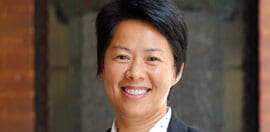Collective Impact 3.0
3 June 2015 at 10:46 am
Riding the wave of collective impact is to remember that while there are deep and intractable problems to solve, there are also many small scale situations that might be addressed with ingenuity and wise leadership, writes social worker and associate at Together SA, Moira Deslandes.
 For generations, social workers, policy makers, funders and politicians have worked together (and apart) to try to get to the bottom of what gets in the way of communities reaching their potential.
For generations, social workers, policy makers, funders and politicians have worked together (and apart) to try to get to the bottom of what gets in the way of communities reaching their potential.
The linear analysis of cause and effect has led to linear responses that often manifested as silos. The first generation of us worked with commitment, yet often in splendid isolation, from other parts of the system and indeed other systems impacting on the lives of those who were not getting their fair share of the information, resources and gifts of the commons.
The second generation of us worked in partnership and collaboration – Roundtables in plentiful supply (although there have been times when I felt I was going round and round the mulberry bush). We all know that collaboration is not an outcome. How many meetings and discussions have you been a part of when the biggest decision was the date of the next meeting? And even though there were little wins along the way and some successes at a bi-lateral or tri-lateral level between a few key players, many of those wins were for the agencies involved and their shared clients, rather than an attempt to get to root causes.
During May, Collaboration for Impact and partners from around the country, hosted Mark Cabaj, one of the lynchpins behind the Tamarack Institute this past couple of weeks. For over ten years Mark led Tamarack Institute for Community Engagement’s Vibrant Communities work.
This poverty focused work across scores of cities uses a collective impact approach a decade before the term was coined. Mark's experience in collective impact and complex-based community change theory are internationally acclaimed. His work across systems, tiers of Government, communities and business in Canada helped build a reputation as a practical and inspiring leader and educator. Mark’s deep experience was a treasure trove of practical and applied ideas for those went to his workshops. If you missed him there is a cornucopia collection on the Tamarack Institute’s site.
His South Australian leg was hosted by Together SA and the hunger to learn from Mark and more about developmental evaluation and moving the needle was evidenced by the largest number of registrants for the whole tour coming in Adelaide. This is certainly a sign there is an appetite to learning more about collective impact and its applications in a South Australian context.
Never shying away from the reality of complexity and complex adaptive systems, Cabaj explored some emerging principles and practices of adaptive leadership, and management, aimed to improve the probabilities, but never guarantee, that people and organisations can move the needle on complex issues. Collective impact approaches are by nature large scale and this feature is essential in shifting the dial and requires adaptive leadership.
South Australia has a number of leading practices that support collective impact including public sector initiatives:
– 90 day projects http://publicsector.sa.gov.au/culture/90-day-projects/
– SA Connected http://dpc.sa.gov.au/sa-connected-ready-future for government data sharing policy and systems
Together SA is supporting two community driven approaches to collective impact – one in the metropolitan area and other in the southern suburbs. These initiatives are gaining momentum and both focus on the early years :
– Together in the South http://www.togethersa.org.au/project/in-the-south/
– Mid Murray Family Connections http://www.togethersa.org.au/project/mid-murray/
Riding the wave of collective impact is to remember that while there are deep and intractable, indeed wicked problems to solve, there are also many small scale situations that might be addressed with ingenuity, excellent facilitation, reconfiguration of resources, wise leadership.
Mark’s parting words were “collective impact when necessary but not necessarily collective impact”.
If you missed Mark’s visit check out for a storify of the twitter feed http://t.co/jsqz0n0HND
About the Author: Moira Deslandes has worked from the kitchen table to the cabinet table as a direct service social worker to the Chief of Staff to a Minister in Government. She is an associate of Together SA.







